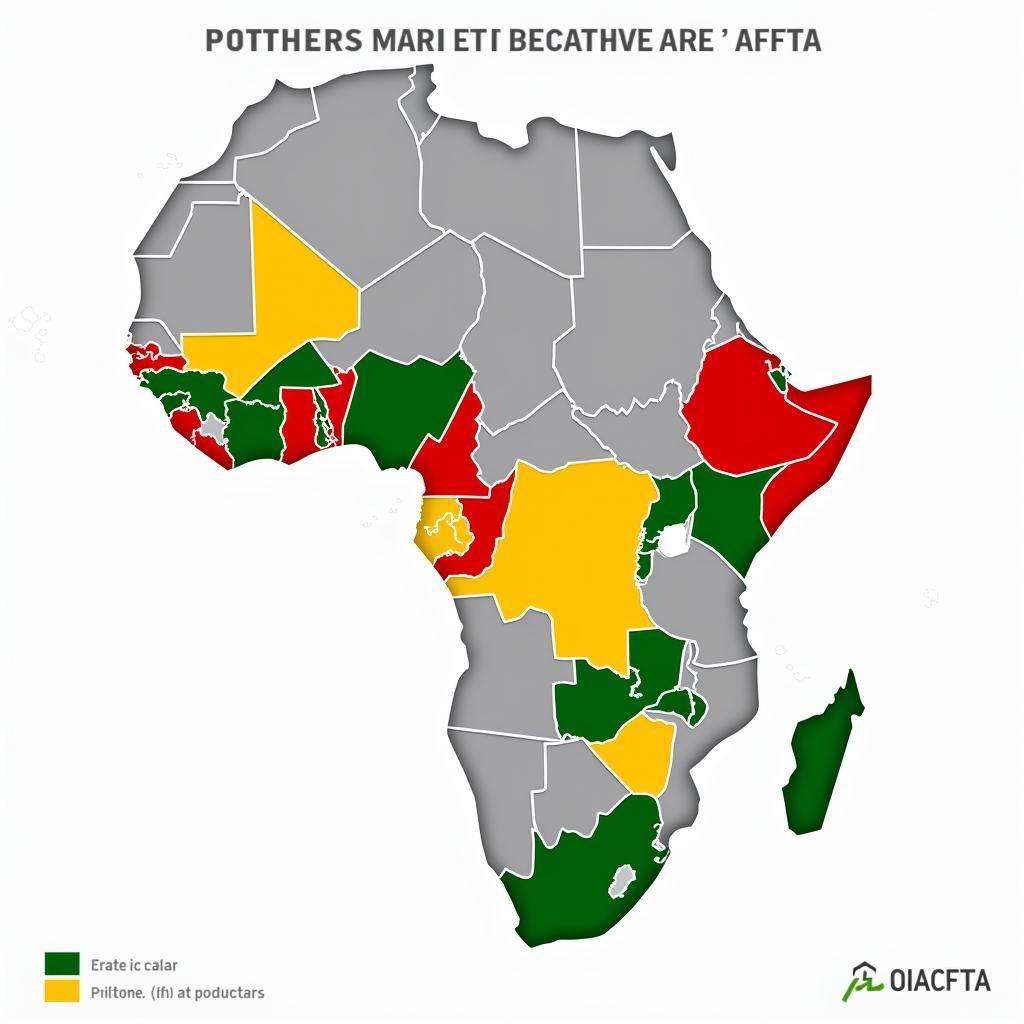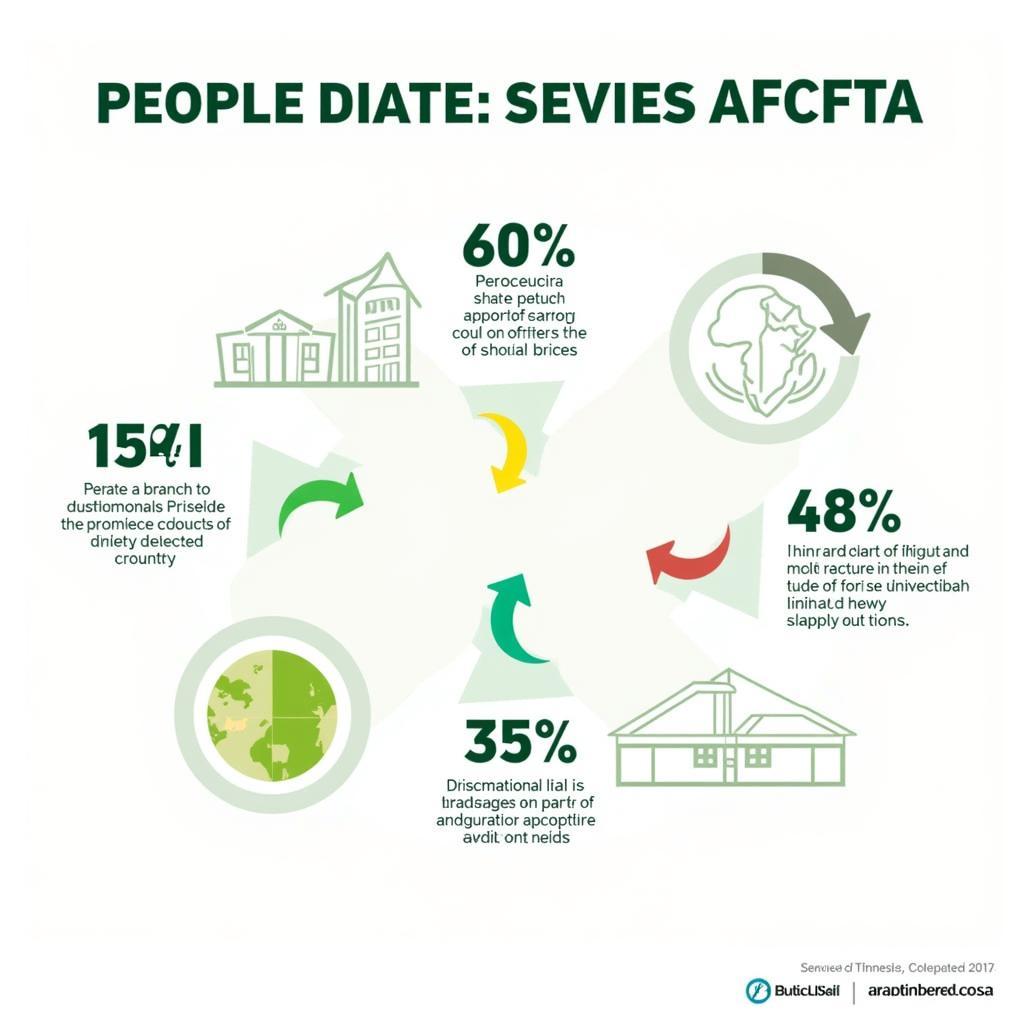African Free Trade Zone Definition: A Comprehensive Guide
The African Continental Free Trade Area (AfCFTA), often referred to as the African free trade zone, is a landmark trade agreement aimed at creating a single continental market for goods and services, with free movement of business persons and investments. This ambitious initiative has the potential to reshape the economic landscape of Africa and lift millions out of poverty.
Understanding the African Free Trade Zone Definition
The African Free Trade Zone Definition encompasses more than just eliminating tariffs. It aims to create a unified market by harmonizing trade rules, facilitating cross-border investments, and promoting sustainable development across the continent. This includes simplifying customs procedures, reducing non-tariff barriers, and establishing a dispute settlement mechanism. The ultimate goal is to boost intra-African trade, attract foreign investment, and foster economic diversification.
Key Objectives of the AfCFTA
- Boosting Intra-African Trade: By reducing tariffs and simplifying trade procedures, the AfCFTA aims to significantly increase trade among African countries. This will create new markets for African businesses, promote regional value chains, and enhance competitiveness.
- Attracting Foreign Investment: A larger, unified African market will be more attractive to foreign investors, leading to increased capital flows and job creation.
- Promoting Industrialization and Value Addition: The AfCFTA aims to encourage the development of local industries and value chains, reducing reliance on raw material exports and promoting the production of higher-value goods.
- Creating Jobs and Reducing Poverty: Increased trade and investment will stimulate economic growth, leading to job creation and improved livelihoods for millions of Africans.
- Enhancing Regional Integration and Cooperation: The AfCFTA promotes closer collaboration among African countries, fostering political and economic integration across the continent.
 African Free Trade Zone Map
African Free Trade Zone Map
The Potential Impact of the African Free Trade Zone
The African free trade zone has the potential to transform the African economy. It could create a market of 1.3 billion people with a combined GDP of over $3.4 trillion. This would make it the largest free trade area in the world in terms of participating countries since the formation of the World Trade Organization. The agreement is expected to significantly boost intra-African trade, creating new opportunities for businesses and consumers alike.
How Will the African Free Trade Zone Benefit Businesses?
- Access to a Larger Market: Businesses will have access to a significantly larger market, enabling them to expand their operations and reach new customers.
- Reduced Trade Costs: Lower tariffs and simplified customs procedures will reduce the cost of doing business across borders.
- Increased Investment Opportunities: The AfCFTA will create new investment opportunities, attracting both domestic and foreign capital.
- Enhanced Competitiveness: Businesses will benefit from increased competition, which will drive innovation and efficiency.
 African Free Trade Zone Trade Flows
African Free Trade Zone Trade Flows
Challenges and Opportunities
While the AfCFTA presents enormous opportunities, there are also challenges that need to be addressed. These include:
- Infrastructure Deficits: Improving infrastructure, such as roads, railways, and ports, is crucial for facilitating trade and investment.
- Non-Tariff Barriers: Addressing non-tariff barriers, such as bureaucratic procedures and regulatory differences, is essential for realizing the full potential of the AfCFTA.
- Capacity Building: Building the capacity of African businesses to compete in a larger market is crucial for ensuring that they can benefit from the AfCFTA.
Quote from Dr. Adebayo Adedeji, a renowned economist: “The AfCFTA represents a historic opportunity for Africa to take control of its economic destiny. It is a bold step towards realizing the dream of a united and prosperous Africa.”
Conclusion
The African free trade zone definition encompasses a broad range of initiatives aimed at creating a unified continental market. While challenges remain, the potential benefits of the AfCFTA are immense. By fostering increased trade, investment, and economic diversification, the AfCFTA can pave the way for a more prosperous and integrated Africa.
FAQ
- What is the African free trade zone? The African free trade zone, formally known as the AfCFTA, aims to create a single continental market for goods and services.
- When did the AfCFTA start? The agreement establishing the AfCFTA entered into force in 2019.
- How many countries are members of the AfCFTA? Most African countries are signatories to the AfCFTA.
- What are the main objectives of the AfCFTA? The key objectives include boosting intra-African trade, attracting foreign investment, and promoting industrialization.
- What are some of the challenges facing the AfCFTA? Challenges include infrastructure deficits, non-tariff barriers, and capacity building needs.
- How will the AfCFTA benefit African businesses? Businesses will gain access to a larger market, reduced trade costs, and increased investment opportunities.
- What is the expected impact of the AfCFTA on poverty? The AfCFTA is expected to contribute to poverty reduction through increased trade and economic growth.
For support, contact us at +255768904061, email [email protected], or visit us in Mbarali DC Mawindi, Kangaga, Tanzania. We have a 24/7 customer service team. You can also explore other articles on our website about African economics and development for more information.

